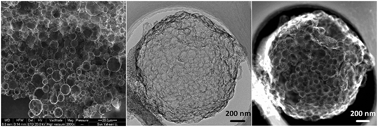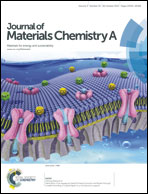Honeycomb in honeycomb carbon bubbles: excellent Li- and Na-storage performances†
Abstract
Herein, honeycomb in honeycomb carbon bubbles (HHCBs) with macro-, meso-, micro-, and nanopores have been successfully obtained for the first time via a simple one-step direct templating method. Benefiting from unique features, the HHCBs demonstrate superior cycling stability and rate capability when employed as anode materials for both lithium and sodium-based batteries. For instance, hollow carbon bubbles used as lithium ion battery anodes deliver a high reversible capacity of 1583 mA h g−1 and nearly 100% capacity retention over 100 cycles at a constant current of 372 mA g−1 (1C). A high reversible capacity of 200 mA h g−1 also can be obtained at an extremely high current rate of 300C. When tested as sodium ion battery anodes, the electrode can deliver an initial reversible capacity of 373 mA h g−1 and retain 209 mA h g−1 after 400 cycles at 100 mA g−1. Even at a high current rate of 1000 mA g−1, the electrode still can release a substantial reversible capacity of 122 mA h g−1 after discharging–charging for 700 cycles, suggesting a high rate capability and cyclability. The approach provides a valuable candidate acceptable for use as both lithium and sodium ion battery anodes.


 Please wait while we load your content...
Please wait while we load your content...